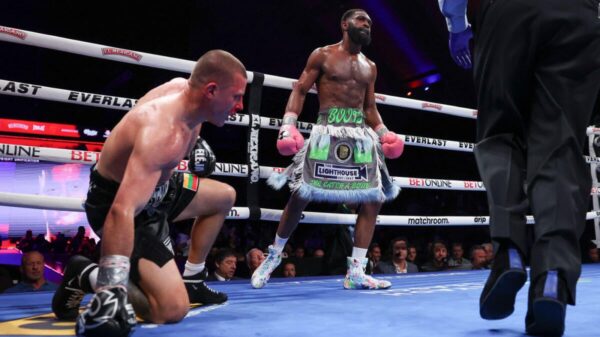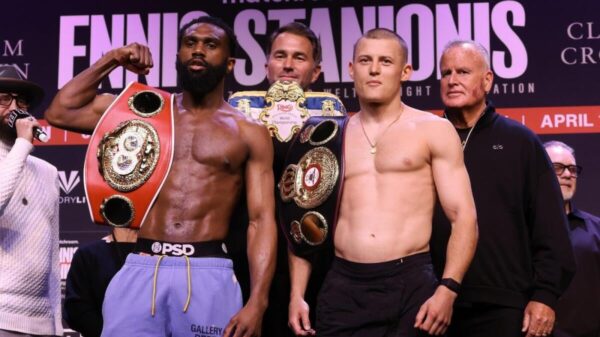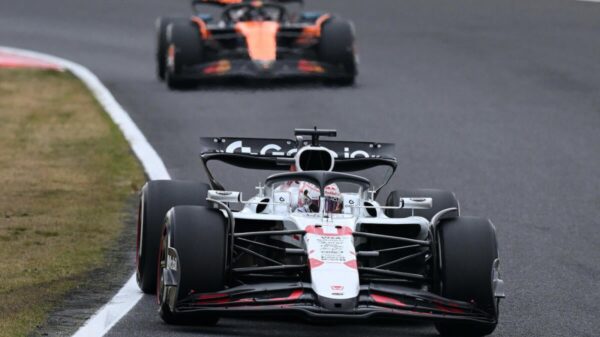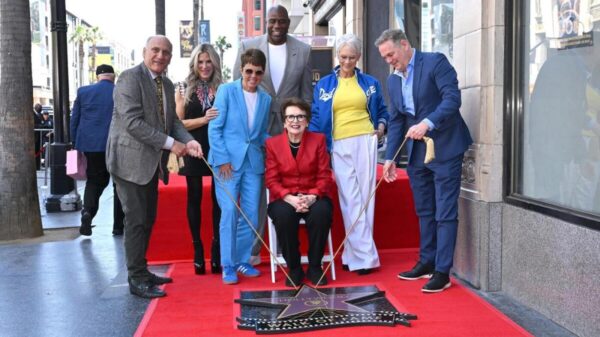The curiosity of it all is that for as much the baseball bat itself has changed, the rules presiding over those changes have changed very little. Here are the bat regulations laid out during a convention of National Association of Base Ball Players in 1861:
“The bat must be round and must not exceed two and one half inches in diameter in the thickest part. It must be made of wood, and may be of any length to suit the striker.”
And here is the current MLB Rule 3.02(a) as it exists some 164 years later:
“The bat shall be a smooth, round stick not more than 2.61 inches in diameter at the thickest part and not more than 42 inches in length. The bat shall be one piece of solid wood.”
While the contemporary dictates go on to address such things as the cupped ends of bats and grip-enhancing substances applied to the handle – both allowed within certain specifications – and even the color of the bat, the most important bat regulations have scarcely shifted in those 164 years. Within those words, both then and now, are hints of permissiveness and even invitations to tailor and innovate. Little wonder, then, that we’ve journeyed from the three-pound “wagon tongue” bat favored by Cap Anson to, yes, the bowling pin-shaped “torpedo” bats that have emerged as one of the leading subplots of the 2025 season thus far. You’ll see above, both in 1861 and 2025, no limits on bat weight, effectively no limit on bat length (no one’s entering the batter’s box with a bat anywhere close to 42 inches in length), and – critical to the emergence of the torpedo bat – no pronouncements on where the widest part of the bat must be.
‘I think they’ll be banned’: What’s the future of MLB’s torpedo bats? Insiders weigh in on baseball’s new fad
R.J. Anderson
These loose regulations have abetted much experimentation over the years, and right now it’s worth looking back upon the very meandering path that took us from those earliest giant slabs of milled lumber to the wispy-handled implements of today.
In the most general terms, the formula for force — force applied to a pitched baseball, in this instance — has informed how the baseball bat has evolved across baseball history:
f = ma, where m = mass and a = acceleration
Since acceleration is velocity (v) divided by time (t), the formula for force can also be expressed as:
f = mv/t
Hitters, managers, and coaches in the Deadball Era focused on the mass part of the formula, as proxied by the weight of the bat, to the over-exclusion of all else. Eventually, though, batsmen and those charged with instructing them gradually realized that bat speed, or the acceleration part of the formula above, was being neglected. This put bats on a diet and led to some experiments in bat aerodynamics, all in the name of getting bat to ball as rapidly as possible and repelling the pitch as far as possible.
That explains the broad view of baseball-bat history, one as aerial as, say, a certain Joey Gallo pop-up from 2019. To zoom in a bit more closely, let’s undertake a brief and certainly not exhaustive timeline of some of the most important and or flatly ridiculous changes the bat has undergone across the many decades of organized-baseball history – up to and including, of course, the torpedo bat. Ladies and gentlemen, start your (search) engines …
Dec. 23, 1845: Alexander Cartwright authors the seminal rules of the game, a set of decrees that will come to be known as “The Knickerbocker Rules.” The bat is mentioned only once, and that one time is through the lens of pitching. The ninth of Cartwright’s 20 rules reads: “The ball must be pitched, not thrown, for the bat.”
Dec. 12, 1860: During a meeting of the National Association of Base Ball Players at the Mercantile Library at Clinton Hall in Manhattan, the Rules and Regulations of the Game of Base Ball are formally adopted. Among those rules are the bat regulations quoted above. Aside: The rules also state that the ball used in a game shall “become the property of the winning club, as a trophy of victory.”
1870s: Ash from the white ash tree and hickory emerge as the favored wood choices for bats.
1884: Bud Hillerich of his father’s woodworking shop in Louisville, Kent., is believed to be the first to customize a bat for a player. The ash bat is made using a lathe for Louisville’s star infielder, Pete Browning. One of Browning’s nicknames was “The Louisville Slugger,” and by 1894 the moniker is trademarked by the Hillerichs. Prior to the widespread use of professionally made bats, players would often craft their own out of tree limbs, ax handles, and scrap wood from building or even casket construction.
1885-93: Flat-sided bats, similar to those used in the sport of cricket, are permitted in the National League in an effort to increase run scoring. However, the change, initially proposed by Harry Wright of the Cincinnati Red Stockings, leads to an over-correction, and by 1893 flat-sided bats are banned once again. Also in 1893, bats made of pine and bats with the ends sawed off are banned.
June 17, 1890: Emile Kinst acquires U.S. patent No. 430,388 for an “improved ball-bat,” which on account of its appearance becomes known as the banana bat:
The idea is to create an unusual spin on the batted ball which, to Kinst’s thinking, would make the batted ball more difficult for the defense to field successfully. While it may have been used by a handful of minor-league hitters, Kinst’s idea never gains much traction.
Early 1900s: Around this time, the practice of “doctoring” bats is pioneered. In the earliest version of the dark art, hitters would drive nails into the head of the bat and then conceal the work with a layer of varnish. In the coming decades, the practice of illegal doctoring would expand to include things like corking, the use of highly elastic “super balls” in the hollowed-out barrel, and “grooving” the bat with cuts in the wood in a likely futile attempt to improve backspin on the batted ball. Notable players like Al Rosen, Pete Rose, Sammy Sosa, Bill Buckner, Albert Belle, Graig Nettles, and Norm Cash, among others, will be alleged or confirmed to have doctored their bats in one way or another.
Around this same time, Spalding Sporting Goods produces the “mushroom bat,” which features an unconventional knob designed to spread the weight of the bat more evenly. Newspaper ads for the mushroom bats feature endorsements from John McGraw, Charles Comiskey, and the entire famed infield trio of Tinkers, Evans, and Chance.
1904: Nap Lajoie, one of baseball’s first and biggest stars of the 20th century, makes the most of his split-grip hitting approach by using – in practice and even some games – a double-knobbed bat. The unique design allows Lajoie to have each hand resting on a knob during his swing.
1905: Pittsburgh Pirates star Honus Wagner becomes the first player to endorse a bat.
1912-13: John McGraw tells one of his young players, infielder Heinie Groh, that he might be a better hitter if he could find a bat better suited to his undersized hands. That leads Groh to collaborate with Spalding on a bat with a handle thin enough to accommodate his hands but substantial enough in the barrel to aid his contact-first approach. What they settled on became known as the “bottle bat.” As Groh later explained to author Lawrence Ritter:
“We whittled down the handle of a standard bat, and then we built up the barrel, and when we were finished it looked like a crazy sort of milk bottle.”
If there’s a spiritual ancestor to the torpedo bat, albeit an exaggerated one, it’s probably Groh’s bottle bat:
Early 1920s: Coming out of the Deadball Era, Rogers Hornsby leads a shift to bats that tapered more steeply toward the knob (although not to the extent of the bottle bat). The thin-handled bats, which improve bat speed, will eventually become the preferred style for almost every hitter as baseball evolves into a power game.
April 12, 1932: Goose Goslin of the St. Louis Browns attempts to take his first plate appearance of the 1932 season using a bat with 12 green stripes spanning the entire length of the implement. The idea, first concocted by a Browns front-office executive, is that the prominent striping would distract the pitcher. However, umpires disallow the bat before Goslin can take a single in-game swing with it, and the next day American League president William Harridge rules that the “zebra bat” is indeed illegal.
1937: Yankees trainer Doc Painter begins putting the team’s bats in ovens so as to remove moisture and thus lighten the bat and harden the wood of the bat.
1940s: The legendary slugger Ted Williams helms a movement toward lighter and occasionally shorter bats. For much of his career, the Splendid Splinter uses bats that weigh between 33 and 34 ounces and span 35 inches. Although some players would gravitate back toward heavier bats in the 1960s, the lighter model still prevails to this day.
1954: Laminated bats are permitted on an experimental basis. The experiment is short-lived, and now any laminated or experimental bats, the manufacturer of those bats, and the manufacturing methods used in making the bats must all be approved by the rules committee.
1955: Limits regarding the use of pine tar as a grip-enhancing agent on bats are added to the official rules. The rule, now catalogued as 3.02(c), reads:
“The bat handle, for not more than 18 inches from its end, may be covered or treated with any material or substance to improve the grip. Any such material or substance that extends past the 18-inch limitation shall cause the bat to be removed from the game.”
1970: Jose Cardenal becomes one of the earliest major-leaguers to use a cupped bat, in which the barrel cap is indented to provide shift of weight toward the handle and, at least theoretically, improve bat speed. Cardenal is introduced to the cupped bat by a former teammate, George Altman, who learned of them while playing in Japan.
1975: MLB formally approves the use of cupped bats with some limitations laid out in Rule 3.02(b):
“An indentation in the end of the bat up to 1 ¼ inches in depth is permitted and may be no wider than two inches and no less than one inch in diameter. The indentation must be curved with no foreign substance added.”
1980s: Yankees star Don Mattingly begins filing down the handles of his bats into a “V” or triangle-like shape in an effort to improve his bat grip and swing speed.
July 24, 1983: In the top of the ninth inning in the Bronx, George Brett of the Royals hits a two-out, two-run, go-ahead home run off Yankees closer Goose Gossage. Yankees manager Billy Martin, at the urging of one of his coaches, Don Zimmer, asks umpires to check Brett’s bat for excessive pine tar. After the umpires confer and measure the pine tar on Brett’s bat against the 17-inch side of home plate – 18 inches of pine tar on the handle are allowed – rookie plate umpire Tim McClelland calls Brett out, which ends the game and leads to an explosive protest by Brett:
The Royals’ front office subsequently files a protest with the league office in which they argue that the use of pine tar is merely a grip enhancer and that the use of it on the handle is not tantamount to “doctoring” the bat for improved bat speed and batted-ball velocity and distance. American League president Lee MacPhail upholds Kansas City’s protest by stating, “It is not in accord with the intent or spirit of the rules and the rules do not provide that a hitter be called out for excessive use of pine tar.”
Almost a month later – and after Yankees owner George Steinbrenner had unsuccessfully attempted to secure a court injunction against being forced to complete the game – the remainder of the ninth inning is played, this time with the Brett home run on the board. The Royals win 5-4.
After the “Pine Tar Game” and pursuant to MacPhail’s ruling, this addendum is added to the rulebook under Rule 3.02(c):
“NOTE: If the umpire discovers that the bat does not conform to (c) above until a time during or after which the bat has been used in play, it shall not be grounds for declaring the batter out, or ejected from the game.”
1994: MIT aeronautics professor Justin DiTullio patents a bat design in which the barrel is dimpled with small dents, which reduces drag and thus improves bat speed. His testing reveals that dimpled bats could improve swing speed by 3-5% and add 10-15 feet of distance to batted balls in the air.
July 5, 1994: White Sox manager Gene Lamont in the first inning requests that umpires confiscate the bat of Cleveland slugger Albert Belle so that it may be inspected for illegal doctoring, corking in particular. The umpires do so and place the bat in a locker in their Comiskey Park II dressing room so that it can later be examined. This prompts Cleveland pitcher Jason Grimsley to volunteer for a mission to pilfer the offending bat. Grimsley climbs into the ceiling by removing a tile within visiting manager Mike Hargrove’s office, crawls through the ductwork with a flashlight in his mouth, and then descends into the umpire’s unoccupied quarters by going through an escape hatch and onto the top of a refrigerator. He removes Belle’s corked bat from the locker, replaces it with an uncorked bat belonging to first baseman Paul Sorrento (according to Grimsley, all of Belle’s bats are corked), and then makes his getaway. Unfortunately for Grimsley’s determined efforts, the model number of Belle’s bat has already been catalogued by umpires. As well, Paul Sorrento’s bat has the name “Paul Sorrento” engraved on it, which may account for the fact that umpires are not fooled by Grimsley’s switcheroo. The team is forced to hand over Belle’s bat by the league but only after Chicago police and a former FBI agent secured by MLB dust the umpire’s quarters for fingerprints. Belle is eventually suspended for 10 games, but the suspension is reduced to seven games on appeal. Grimsley does not reveal his role in the caper until a 1999 interview with the New York Times. “That was one of the biggest adrenaline rushes I’ve ever experienced,” Grimsley says of his efforts in Chicago. “I went skydiving once, and I can compare it to that.”
1997: Joe Carter of the Toronto Blue Jays becomes the first hitter to use a maple bat in an MLB game.
2003: Barry Bonds’ record 73-homer season popularizes the use of the maple bat across MLB as an alternative to the more traditional ash bat.
2005: MLB commissions a scientific study that finds a negligible difference between batted-ball exit velocities for maple and ash bats.
2009: MLB implements new rules regarding the minimum wood density of bats and bans “soft” maple bats in an effort to address the propensity of maple bats to shatter and thus create hazards for players and even fans in the seats.
2010s: Axe bats increase in popularity and are used by a number of big-leaguers, including Mookie Betts and George Springer. The ergonomic handle of the bat is slanted like the handle of an axe, which according to research may improve bat speed and reduce the chances of hand and wrist injuries in hitters.
2018: Jeff McNeil of the Mets is among the players to use a knob-less bat to provide superior weight distribution – important for hitters like McNeil who often choke up on the bat.
2021: Hillerich & Bradsby, makers of bats under the Louisville Slugger brand, first receives orders for a bowling pin-shaped bat, the design of which will be refined and come to be known as the “torpedo bat.” Nico Hoerner of the Cubs becomes the first MLB player to use the torpedo-bat precursor in a game in 2023, but he soon goes back to a more traditional design.
Hillerich & Bradsby traces its company origins to Bud Hillerich’s father’s woodshop in which Pete Browning’s customized bat was crafted some 137 years prior.
2022: Nolan Arenado and Paul Goldschmidt of the Cardinals use the “puck knob” on their bats to provide a counterweight. Variations on the puck knob and the principle behind it have been used by hitters for years.
2023-24: Yankees assistant minor-league hitting coordinator Aaron Leanhardt, who also holds a Ph.D. in physics, hears from hitters he works with that they often hit the ball somewhere other than the widest part of the bat. These discussions prompt him to develop, through trial and error and with feedback from players who tested the early models, the torpedo bat. The bat is designed to address those initial concerns of hitters by concentrating the mass of the bat where batters most often make contact.
2024: Without much initial attention, the torpedo bat design begins to take hold in MLB. Most notably, Giancarlo Stanton of the Yankees uses the torpedo bat in the postseason en route to winning ALCS MVP honors. The Mets’ Francisco Lindor also used one during arguably the best offensive year of his career.
March 27, 2025: By Opening Day, at least eight of MLB’s 30 teams have torpedo bats within their game inventories. In a matter of days, all 30 teams will have placed orders for one or more torpedo bats.
March 29, 2025: The Yankees bash a franchise-record nine home runs at home against the Brewers with a number of their hitters using the torpedo bat. Early in the game, Yankees broadcaster Michael Kay explains the torpedo bat:
March 31, 2025: Reds star Elly De La Cruz enjoys a career night – two home runs, a double, four hits, seven RBI, and 11 total bases – while using a torpedo bat.
April 6, 2025: In an interview with the New York Times, MLB commissioner Rob Manfred confirms that the torpedo bats comply with MLB rules and are “absolutely good for baseball.”
Sources: Associated Press; Baseball-Almanac.com; BaseballHall.org; BaseballRulesAcademy.com; The Cheater’s Guide to Baseball by Derek Zumsteg; ESPN.com; Chicago Tribune archives; The Glory of Their Times by Lawrence S. Ritter; MLB.com; The Bill James Historical Baseball Abstract by Bill James; The Hardball Times; Los Angeles Times archives; The New Bill James Historical Baseball Abstract by Bill James; The New Dickson Baseball Dictionary by Paul Dickson; New York Post archives; New York Times archives; The Rules of Baseball by David Nemec; SABR.org; Seattle Times archives; SluggerMuseum.com; Smithsonian magazine; Total Baseball, edited by John Thorn, Pete Palmer, and Michael Gershman; VeloSports.com; Xbats.com
Read the full article here























































